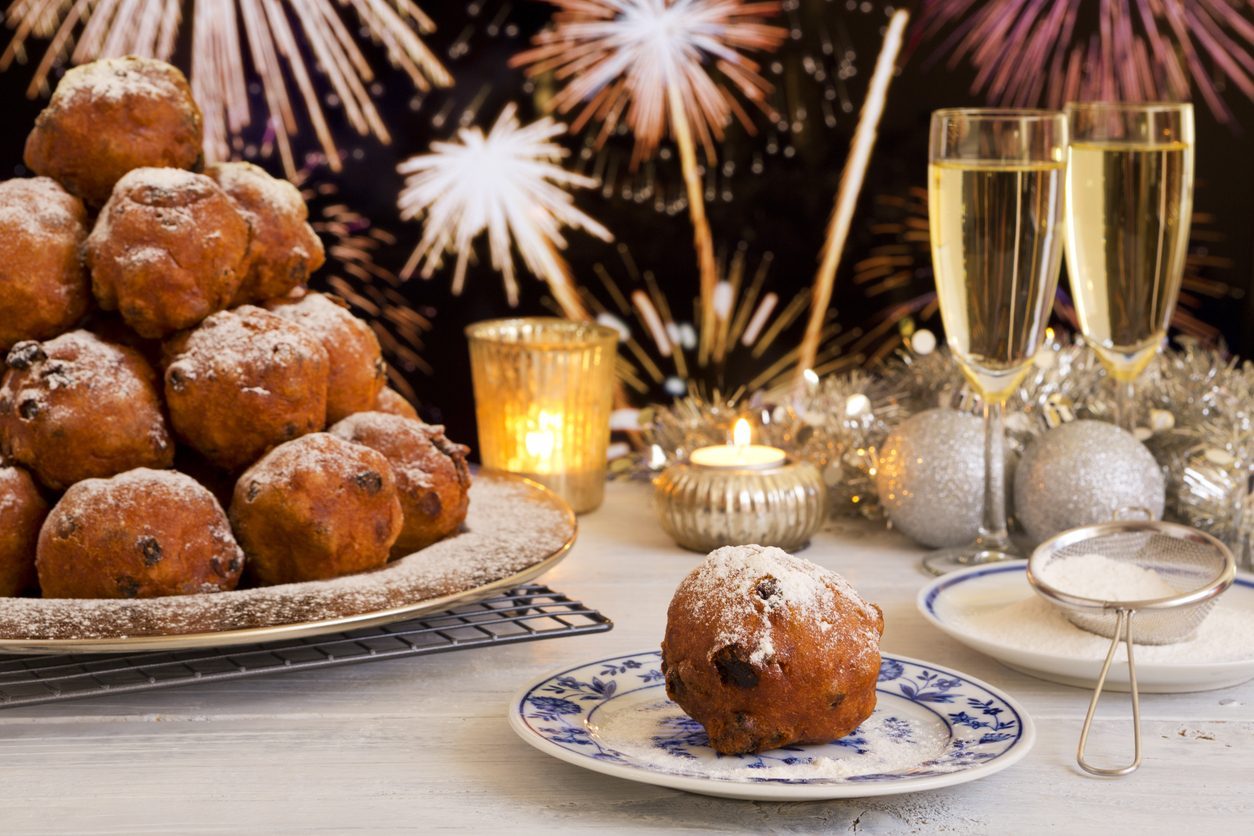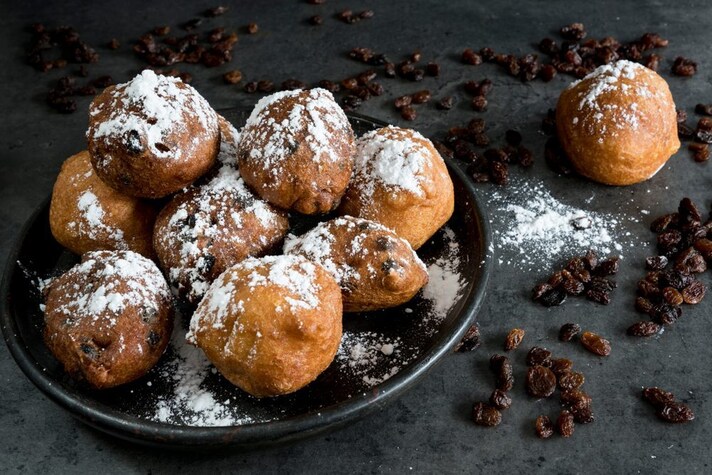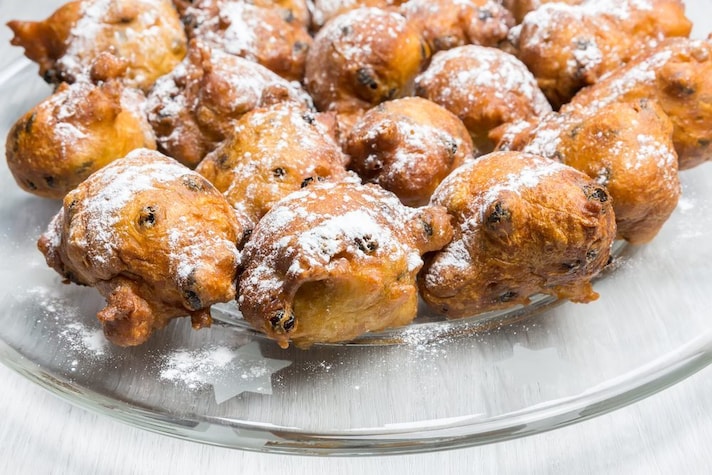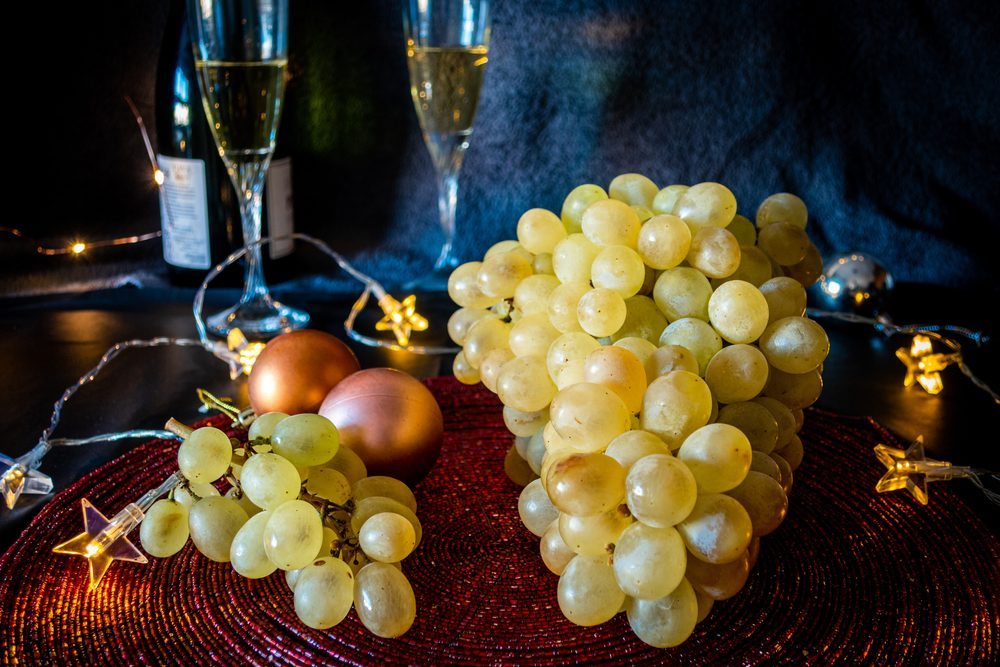What Are Oliebollen, Dutch New Year’s Fritters, and What is Their History?
What's better than starting the new year with a touch of sweetness? The Dutch know it well, and on New Year's Eve they always prepare and eat oliebollen, very sweet leavened dough fritters enriched with raisins and covered in sugar.
;)
In the U.S., New Year's Eve, from a food perspective, means eating lentils, pork, collared greens or black-eyed peas, lucky food that is supposed to bring you as much money as there are lentils on the plate. But you know, different countries have different traditions. In Holland, for example, the beginning of the new year is accompanied by a touch of sweetness: the typical dish, or rather dessert, of New Year's Eve is oliebollen (literally oil balls, pronounced òlibòllen).
They are inviting leavened dough fritters enriched with raisins and covered with powdered sugar, strictly fried and usually sold in colorful wagons that populate Dutch cities from November 1st to January 1st, or in bakeries that dedicate themselves to frying these sweets starting after Christmas. A truly delicious tradition, but where do these sweets come from and why are they eaten on New Year's Eve? Let's discover the history of oliebollen.
History and Curiosities About Oliebollen
Oliebollen have a very ancient and fascinating history, which has its roots in the traditions of the Germanic tribes of hundreds of years ago. The most accredited theory on the birth of the fritters (in their very first version) is that the Germanic tribes settled in the ancient territories of the Netherlands prepared them on the occasion of the Yule/Joele/Jul period, or the celebration of the winter solstice between December 26th and January 6th. They were the sweet offered to the evil spirits that wandered around at night according to ancient beliefs, to satiate them and prevent them from eating humans.
Other theories suggest that the first forms of oliebollen appeared in the Middle Ages, prepared to break the fast imposed starting from November 11th on the occasion of San Martino and designed to save provisions in a period in which the land does not produce, and therefore to better get to the end of winter. Still others believe that the fritters were imported by Jews who fled from Portugal at the time of the Inquisition because of the raisins they contain.

Oliebollen probably owe something to each of these versions, especially the time period in which they are consumed, which still corresponds to that of the oldest stories. The very first attested recipe for the fritters can be found in the 1667 Dutch book De verstandige kock: they were still called by the old name oliekoecken (“oil biscuits”) but, as shown in the painting by Albert Cuyp in the Dordrechts Museum, they looked very much like modern fritters.
Since then, oliebollen have come a long way: each year, it is estimated that the Dutch eat between 80 and 90 million pieces, and they are fried in enough oil to circle the globe 1,000 times. Since 1993, the newspaper AD has even organized a national test to find the best oliebollen in the country. Purchased that day from various food vendors and bakeries, they are blind-tasted by a panel of 20 tasters at a specialized center.

How to Prepare Oliebollen
Usually the Dutch do not make these fritters at home but prefer to buy them ready at kiosks and bakers, also because creating the perfect fritter is not easy: it must be dry and crunchy on the outside, soft and well cooked on the inside, perfectly leavened and with raisins well distributed. Those who want to try making them at home still follow the original recipe from the 17th century, with some differences: today almonds and spices are no longer used, they are fried in other types of oil than the rapeseed oil that was popular at the time and it is fine to use brewer's yeast instead of the original sourdough.
If you want to try your hand at making Dutch oliebollen, you need to start by dissolving the dry brewer's yeast and sugar in warm milk, mix and let it rest for a few minutes. Then add the sifted flour and a pinch of salt until the mixture is smooth but very sticky; only now add the egg and work the dough a little more, then cover with a damp cloth and let it all rise for an hour but, after half an hour, add the raisins and knead again.

Now comes the most delicate moment, frying: heat plenty of oil to 360°F/180°C in a deep, high-sided pan, then form balls of the mixture with an ice cream spoon (pass it through a glass of oil first, so the mixture doesn't stick) and fry each fritter for 8 minutes, 4 on each side. Once drained and dried well with absorbent paper, cover the oliebollen with a generous layer of powdered sugar and then enjoy them while still hot.
;Resize,width=767;)
;Resize,width=712;)
;Resize,width=712;)
;Resize,width=712;)
